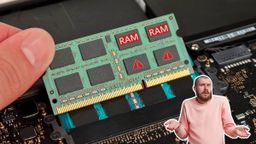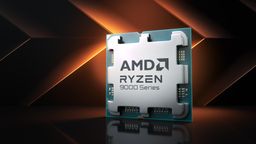The Israel Institute of Technology (Technion) is developing a revolutionary system for using applications, which basically consists of move program calculations from the CPU to RAM.
Perform CPU operations required by applications directly in RAM, which is where the data is, it’s a hundred times fasterand consumes a thousand times less energy.
Let’s see what are the possibilities and limitations of using this revolutionary method of running apps, and the implications it has.
Transfer calculations from CPU to RAM
All data used with a computer application is stored on the storage unit, for example a hard drive or an SSD. When you launch an application, the data it needs is moved to RAM.
The CPU or processor, which is responsible for carrying out the calculations, takes this data from the RAM, processes it, and returns it to the RAM or SSD. The process becomes even more complicated when dealing with graphics, which requires moving data to the graphics card’s VRAM memory.
There is a continuous movement of data from one component to anotherand this adds latency, delays the process, and consumes a lot of energy. This is what the PyPIM project (Python and In-Memory Processing).
According to explains Geektimea team of Technion researchers led by Professor Shahar Kotinsky of the School of Electrical Engineering, has developed PyPIM as an open source software package that allows transfer calculations from the processor to the computer memory.
The great advantage that PyPIM provides is that allows development in Python applications that do calculations directly in memory. It is a programming language that is easy to learn, and is also the most used in artificial intelligence. So AI applications are going to be the most favored.
Of course, in order to use this technique, you need to create special hardware. They have already developed simulators of this hardware, which have shown that the technique works.
“There is broad consensus that the approach of performing calculations where the information is (i.e. memory) is the right approach, and that is where the industry is headed,” says Professor Kotinsky.
What PyPIM does is translate the Python language into machine code that allows the CPU to perform calculations within RAM, instead of on the CPU itself. PyPIM will be presented this month at a conference to be held in Austin, Texas, (United States).
Kotinsky recognizes that his method is not suitable for all types of applications. It is ideal for programs that work with a lot of data at the same time, such as AI, but it is not most effective with software that does not handle too much data.
Performing CPU calculations directly in RAM is a hundred times faster and consumes a thousand times less energy.. We’ll see if PyPIM ends up becoming a product for the end user, and we can really enjoy these improvements.
Get to know how we work in ComputerToday.
Tags: Viral, Computers, Memory, Hardware, CPU






![[Img #74661]](https://thelatestnews.world/wp-content/uploads/2024/12/The-power-of-ultrasound-150x150.jpg)







![[Img #74661]](https://thelatestnews.world/wp-content/uploads/2024/12/The-power-of-ultrasound-300x200.jpg)


Add Comment